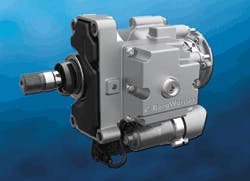BorgWarner provides its advanced front cross differential (FXD) technology for the new SEAT Leon CUPRA. Designed for high-performance front-wheel drive (FWD) vehicles, the electronic limited slip differential significantly improves vehicle handling, traction and stability in nearly all driving conditions. Without sacrificing engine power, BorgWarner’s FXD technology pre-emptively avoids wheel slip and understeering to improve drivability. With its compact and easy-to-install design as well as its broad range of calibration options, FXD technology provides automakers with a cost-effective and fuel-efficient alternative to all-wheel drive (AWD) systems.
BorgWarner’s FXD technology is capable of distributing a specific locking torque of up to 100 percent to either the right or left front wheel, depending on driving conditions. The maximum locking force of FXD technology in the new Seat Leon CUPRA is 1,600 Nm. Utilizing AWD system components such as BorgWarner’s fifth generation electro-hydraulic multi-plate clutch, FXD technology receives input on steering angle, engine torque and yaw rate from vehicle sensors. With this data, the system generates a controlled locking torque between the front wheels so that power is delivered directly to the wheel with the best traction, even before wheels start to slip or spin.
For better cornering performance, FXD technology supplies a torque vectoring effect by directing more power to the outer wheel to reduce inner wheel slip. In addition, the technology can enhance vehicle stability by shifting more power to the inner wheel creating a yaw damping effect which reduces the need for intervention by the brake-based stability control system.
Subscribe to Motor Age and receive articles like this every month…absolutely free. Click here


